
|
Be sure to click on the images for the fullsize pix. Abstract SliTaz 4.0 is the fastest, lightest, yet most enabled mini distro out there. It downloads & boots from less than 40M, running entirely from RAM & bootable from any media, yet has a classical GNU/Linux persistence architecture with independent control over maintenance of the ${HOME} directory & the state of the entire compressed filesystem. Its perhaps a bit parsimonious for newbies, but for those who know what they need from Linux it is an outstanding offering. It sports a modern kernel & Xorg server, has a voluminous packages repository, & can run demanding technologies like Java or Opera almost instantly & with great speed even on older hardware. 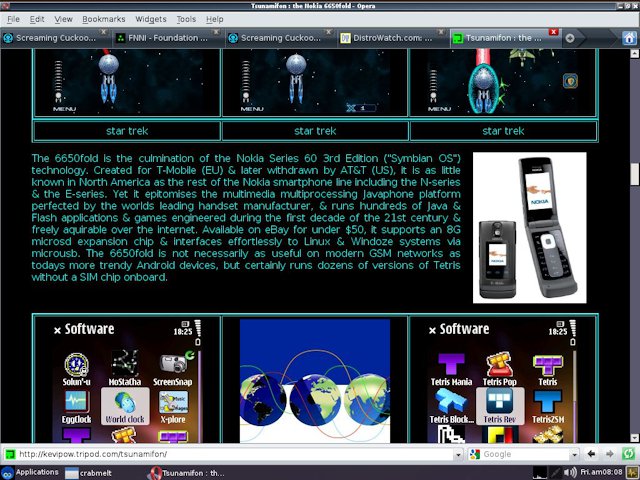
SliTaz 4.0: It runs Opera.
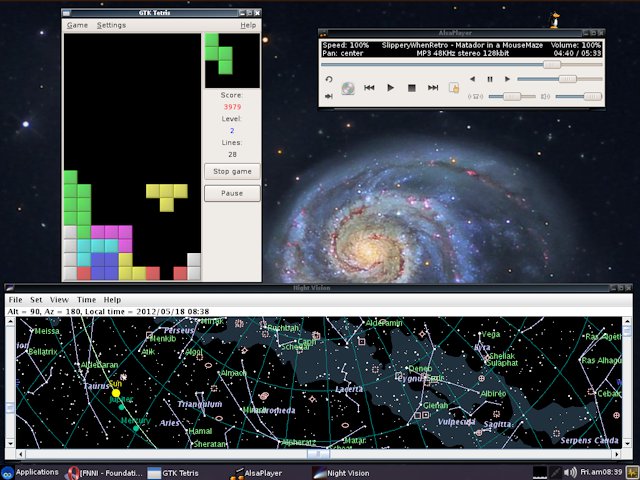
It plays Tetris & MP3s, & runs Java. Some Technical Notes Those of us accustomed to booting from a USB 2.0 flashdrive via GRUB 0.97 are in for a surprise. The screen goes completely black (with a cursor in the corner) for nearly 2 minutes. Its even stranger if you specify the venerable vga=791 on the commandline: after a shorter but more unnerving entirely blank screen Tux appears at the top of the hires framebuffer, the bootlog giving way to a halting but usable Xorg session. Unlike many distros, SliTaz lofts a single monolithic image of the entire filesystem into RAM using the bootloader itself, a process GRUB97 carries out at USB 1.1 speeds on some machines. Although the recommended combination of the extlinux bootloader & LZMA compression can shorten the flashdrive boot to around 70sec, the Plop bootmanager called from GRUB 0.97 can in fact bring the boottime down to under 40sec loading a gzip filesystem from flash. The remastered LiveCD boot is nearly as fast, especially after specifying ide-core.nodma=1.0 as a kernel parm to prevent the CDROM /dev/hdc from experiencing an I/O hang. When booting the kernel & rootfs from a dedicated harddisk partition of course these issues dont arise, the LZMA boot taking a mere 34 seconds, the gzip boot a lightning fast 21sec. The persistent /home/tux folder (referenced by the home= bootloader parm) can reside on any writeable device. SliTaz is a true frugal architecture insofar as because it runs in RAM any changes made during the session arent permanent & vanish with a reboot. & once its running, its robust, & lightning fast. 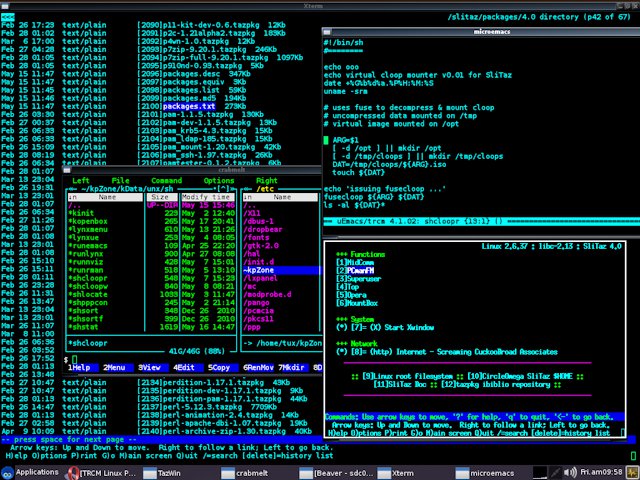
One linux that can take care of itself. Xorg on the Dell Optiplex
Yet the world of post-VESA compliant Linux is filled with wonders, & the exact scripting necessary to get Linux 2.6.37 to enable hires on this machine via Xorg 1.9.5 isnt immediately obvious. Fortunately Puppy Linux 5.3.1 has an Xorg wizard which spits out an xorg.conf with the exact clauses necessary for the 50-Monitor.conf. I just ported that back to SliTaz & it brought the SX270 graphics chips right up.
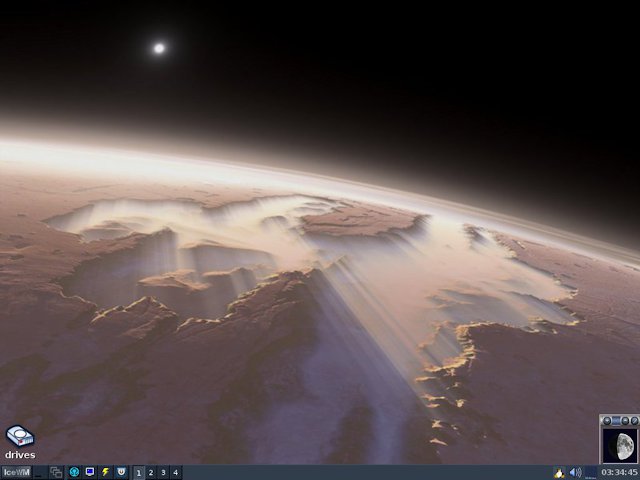
My Puppy Linux desktop (woof). IceWM & FreeDesktop XDG Menuing But I digress. Certainly Puppy is useful as a reference distro, if only to remind me I cant survive for long without IceWM on a system like SliTaz. So I installed it from the repo & wrote a script which loads up the XDG iconspace & generates an IceWM compatible menu. Heres a pic. 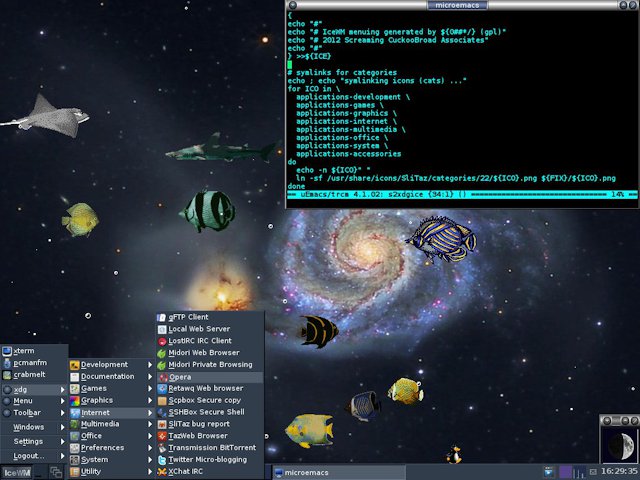
SliTaz 4.0: IceWM, freedesktop, xpenguins, xfishtank, wmmoonclock, microemacs & heres a script which will enable XDG menuing under IceWM 1.3.7 on SliTaz 4.0:
Fuse & the compressed cloop Of course theres more to a concise operating system than keeping the application load small so it can run completely in RAM. Ultimately programs have to be executed from disk somewhere, & this process is greatly enabled by the presence of the Fuse programs fusecloop & fuseiso in the SliTaz repo. As an example, take the Java 1.6 runtime. The selfextracting 22M distro becomes 110M of real resources which can be bundled into a 24M deinstallable tazpkg, but which when running still makes an enormous footprint in memory. An alternative is simply to gen jre16 into a 110M ISO, which doesnt save as much disk (or return as much memory when unmounted) as a tazpkg but which doesnt incur the massive memory consumption until an applet is executed. Yet by using the fusecloop & fuseiso programs an actual compressed ISO (aka cloop or DSLinux "UCI") can be used to effect a readonly extension architecture under SliTaz. A cloop is traditionally an ISO created via mkisofs & run thru create_compressed_fs, on SliTaz the former replaced with genisoimage & the latter part of the fusecloop tazpkg. I therefore wrote a short script to generate *.cxr (Compressed eXecutable Resources) cloop files which can be mounted by the Fuse routines. The java16.cxr is 36M & requires 8min to generate (compared with 4min for the corresponding tazpkg). Fusecloop mounts it to /tmp as what seems to be a 110M ISO but which "du -sh" shows is only using 36M of RAM. My reader script then uses fuseiso to mount the ISO: two userspace driver routines enabling the Java "hit-&-runtime" via a pair of mount points & with the resource sitting on readonly compressed storage.
My 512M GX260 Optiplex has around 300M free RAM once SliTaz is booted. Loading a java16.tazpkg & running an applet takes free memory down to 126M, whereupon deinstalling Java only results in 264M free. Via java16.cxr however, even with the nightvision astronomy applet executing, Ive still got 218M free memory, & 274M left when the resources are unmounted.
Endless capabilities Heres SliTaz running Stellarium (the prodigious Qt application) from a cxr & using WINE (an implementation of the Windoze API) to run the XP program SJboy, a Javaphone emulator which is running a SymbianOS app. Stellarium is so processor intensive it makes the Optiplex fan race, but can be timesliced with a trivial looping script which interleaves sleep commands with "kill -stop" & "kill -cont" messages to the process. 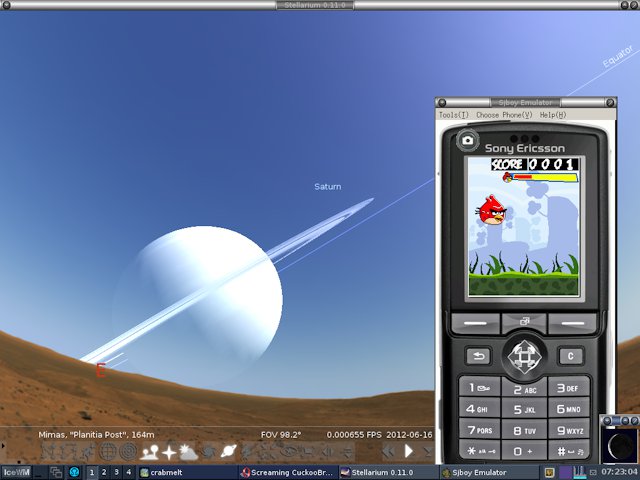
SliTaz 4.0: Stellarium & WINE Turns out itz even more fun getting Celestia to work & using this incomparable orbital dynamics laboratory to synthesize ogg theora videos which Xine has no difficulty playing. 
SliTaz 4.0: Celestia 1.6.0, Xine 0.99.6 The OGV converts right away (via the Puppy GUI for FFmpeg, Ill admit) to AVI / SWF / 3GP &c. Here for example are demo MP4 videos at QVGA resolution for your favourite mobile device. Enjoy.
Conclusion As always my thanks to all the fine individuals who in any way contributed to the success of this project. |


|
 part of the CircleOmega organisation
part of the CircleOmega organisation
|

|


